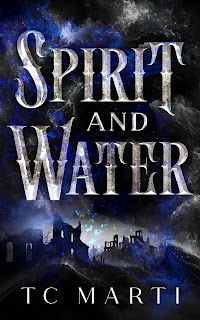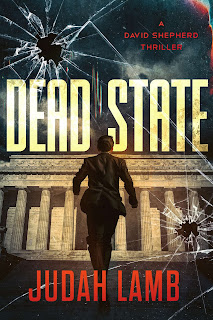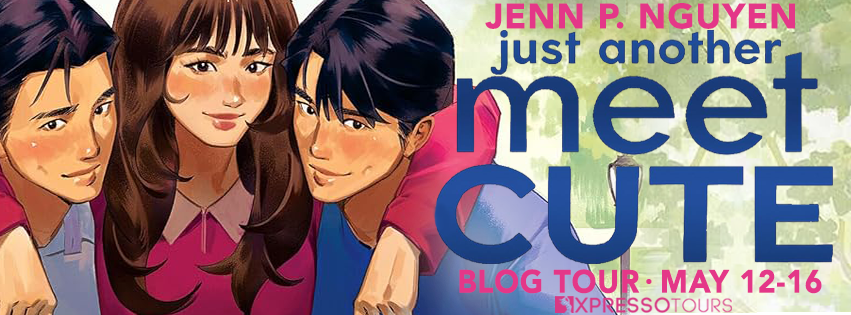Synopsis
A blend of science fiction and stylish mystery noir
featuring a robot detective: the stand alone sequel to Made to Kill
Another golden morning in a seedy town, and a new memory tape for intrepid
PI-turned-hitman--and last robot left in working order-- Raymond Electromatic.
When his comrade-in-electronic-arms, Ada, assigns a new morning roster of
clientele, Ray heads out into the LA sun, only to find that his skills might be
a bit rustier than he expected....
Killing is My Business is the latest in Christopher's noir oeuvre, hot on the
heels of the acclaimed Made to Kill.
Praise for KILLING IS MY BUSINESS
"Hits hard, spins your head around, and leaves you stunned. The Ray
Electromatic mysteries are so freakin’ perfect you’d think robot hitmen and
retro supercomputers had always been part of noir fiction.”—
Peter Clines,
author of
Paradox Bound and
The Fold
"Humor, action, and heart: everything I've come to expect from an Adam
Christopher book, and then some. A marvelous read!"—
New York Times bestseller
Jason
M. Hough, author of
Zero World
“Delivers like a punch from a two-ton robot in a zoot suit.”—
Delilah
Dawson
"Atmospheric and charming as hell. Adam Christopher has an extraordinary
talent for scooping you up and dropping you into an alternative LA that feels
just as real as the street outside your house."—
Emma Newman
Praise for the RAY ELECTROMATIC MYSTERIES
"Robot noir in 60s Los Angeles? You had me at 'Hello.'"—J
ohn
Scalzi,
New York Times bestselling novelist
"Gripping, funny, deadly and suspenseful."—
Boing Boing
“Delivers like a punch from a two-ton robot in a zoot suit.”—
Lila Bowen (aka
Delilah Dawson)
"The dialogue is effortlessly swift and clever, and even the B-movie
climax is a spectacle to behold. Above that, though, Ray sparks to live, and
his antiheroic slant only makes him that much more compelling and and
sympathetic. Knowing that there are only two more Raymond Electromatic
mysteries to come is the book's only disappointment."—
NPR
"Genre mash-ups don't always succeed, but this one will please fans of
both gumshoes and laser beams."—
Publishers Weekly
"A fun, fast read for anyone willing to take the speculative leap--a
must-add for most fiction collections."—
Booklist (starred
review)
"Made to Kill is yet more proof that we should all be thankful for Adam
Christopher and his imagination. This tale of robot noir is unlike anything
I’ve ever read—Adam’s is a weird and wonderful voice and we are lucky to have
it."—
Chuck Wendig,
New York Times bestselling
author of
Aftermath
"Adam Christopher has brilliantly deduced what should have been obvious
all along: Classic noir and robots are a perfect match. Part Chandler, part
Asimov, and part Philip K. Dick, Made to Kill is a rip-roaring cocktail of
smart, sharp, twisty, cyber-pulp awesomeness."—
Adam Sternbaugh,
author of
Shovel Ready
"Made to Kill is just the sort of exciting genre collision that marks out
Adam Christopher as one of the hottest new young SF writers."—
Paul
Cornell, author of
The Severed Streets
"A smart, rollicking noir/SF mashup. One of the best books I've read all
year."—
Kelly Braffet, author of
Save Yourself
Excerpt:
Chapter 1
Listen to this:
Vaughan Delaney was a planner for
the city of Los Angeles. He occupied a position high enough up the ladder that
it entitled him to an office at an equally high altitude in a tall building
downtown that was home to a number of other local government desks. The office
came with a salary that was high for a city employee but nothing to write a
favorite uncle about, and a view that was simply to die for.
Vaughan Delaney was forty-two years
old and he liked suits that were a light blue-gray in color. He carried a
buckskin briefcase that wasn’t so much battered as nicely worn in. On his head
he liked to position a fedora that was several shades darker than his suit. The
hat had a brim that looked at first glance to be a little wide for the kind of
hat that a city planner would wear, but Vaughan Delaney did not break the
rules, neither in his job nor in his private life. He had a position a lot of
people envied, along with the life that went along with it, and he stuck
rigidly within the boundaries of both.
Actually, that wasn’t quite true.
Because the one thing that didn’t fit Vaughan Delaney was his car.
His car was 1957 Plymouth Fury, a mobile
work of art in red and white with enough chrome to blind oncoming traffic on
the bright and sunny mornings that were not uncommon in this part of
California. The machine had fins like you wouldn’t believe and when the brake
lights lit you’d think they were rocket motors. It was the kind of car you
could fly to the moon in, only when you got to the moon you’d cast one eye on
the fuel gauge and you’d pat the wheel with your kidskin-gloved hand, admiring
the fuel economy as you pointed the scarlet hood off somewhere toward Jupiter
and pressed the loud pedal.
It was a great car and it was in
perfect shape. Factory fresh. It was getting on for ten years old but Vaughan
Delaney had looked after it well.
And, I had to admit, that car caught
my optics. It wasn’t jealousy—I liked my own car well enough, a Buick that was
a satisfying ride, functional and elegant and with a few optional extras you
wouldn’t find outside a science laboratory.
No, what I had for the red Plymouth
Fury was something else. Admiration, and admiration for Vaughan Delaney too. He
was every element the city man but that car was a jack-rabbit. Perhaps it was
his mid-life crisis. Perhaps he was telling the city to go take a jump while he
sat shuffling papers in his nice office with his sensible suit and practical
hat. Look what I get to drive to the office in the morning, he said. Look at
what I get to drive out to lunch every Wednesday. Look what I get to drive home
in the evening. It was the kind of car that people would lean out of the office
windows to take a look at, and Vaughan Delaney did every bit to help, the way
he parked the red-and-white lightning bolt right outside the office door.
Because Vaughan Delaney had reached
a certain level within the city hierarchy that allowed him to pick his own
secretary based on the color of her hair and the length of her skirt and he was
not a man who had to walk very far from his car to his desk.
He was also a family man. When the
Plymouth Fury wasn’t outside the office or being driven to lunch on Wednesdays
it lived in a two-car garage that sat next to a modest but modern bungalow in
Gray Lake. Next to the Fury was commonly parked a yellow vehicle that General
Motors had shooed out the door without much of a fuss, a rectangular lozenge on
wheels with whitewall tires shining and seat belt tight and the sense of humor
removed for safety reasons.
This was not a car to take much of
an interest in. It belonged to Vaughan Delaney’s wife. Her name was Cindy
Delaney.
Cindy Delaney loved her husband and
let him know by kissing him on the cheek each and every morning before her
husband went to work. The children loved him too. There were two of those, a
boy and a girl, and both of them had blond hair like their mother and they were
both a decade shy of joining the army and both of them kissed their father on
the cheek each and every morning like their mother did, the only difference
being that Vaughan Delaney had to go down on one knee so they could smell his
aftershave. Then he blasted off in the Plymouth Fury and the quiet street in
Gray Lake was quiet once more until Cindy Delaney took the children to school
in the yellow boat and then came back again twenty minutes later. Then she put
on a housecoat to keep her dress clean and she drove a vacuum over the bungalow
while her husband drove a desk down in the city.
They were a nice family. Middle
class, middle income, middle ambition. The children would grow up and the boy
would play football at high school with his parents watching and the girl would
play flute in the school orchestra with her parents watching and all was right
with the world.
I knew all of this because I’d been
watching Vaughan Delaney for three weeks. I’d been to the street in Gray Lake
and had sat in my car and I’d watched life in and around the bungalow. I’d been
to the office building downtown and had sat in my car and watched the Plymouth
Fury come in for landing and Vaughan Delaney hop, skip, and jump up the stairs
into the building and then waltz down the same steps some eight hours later.
Vaughan Delaney looked like a swell
guy with a good job and a nice car and a happy family.
It was just a shame that he had to
die.
Excerpted
from Killing is My Business © Adam Christopher, 2017
Keep an eye out for another excerpt from Killing is My Business appearing on
Tor.com this June!

ABOUT THE AUTHOR
Adam Christopher’s debut novel EMPIRE STATE was
SciFiNow’s Book of the Year and a Financial Times Book of the Year. The author
of MADE TO KILL, STANDARD HOLLYWOOD DEPRAVITY, and KILLING
IS MY BUSINESS, Adam’s other novels include SEVEN WONDERS, THE AGE
ATOMIC, and THE BURNING DARK.
Adam has also written the official tie-in novels for the hit CBS television
show ELEMENTARY, and the award-winning DISHONOREDvideo
game franchise, and with Chuck Wendig, wrote THE SHIELD for
Dark Circle/Archie Comics. Adam is also a contributor to the STAR WARS:
FROM A CERTAIN POINT OF VIEW 40th anniversary anthology.
Born in New Zealand, Adam has lived in Great Britain since 2006.
Photo Credit: Lou Abercrombie
Giveaway:
--Giveaway is open to International. | Must be 13+ to Enter
- 10 Winners will receive a Copy of Killing is My
Business by Adam Christopher



































































0 comments:
Post a Comment